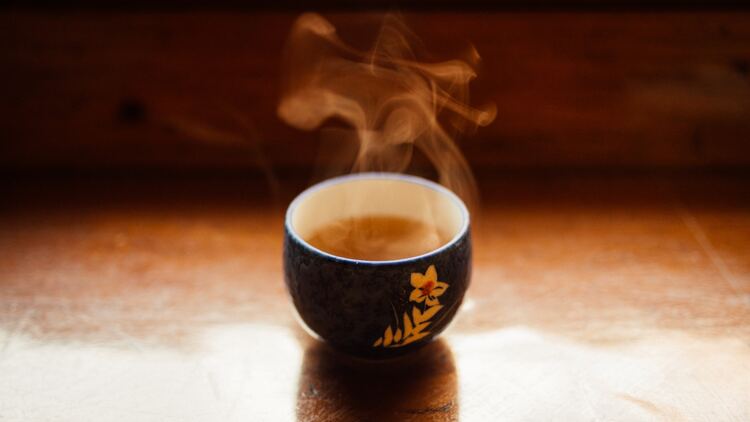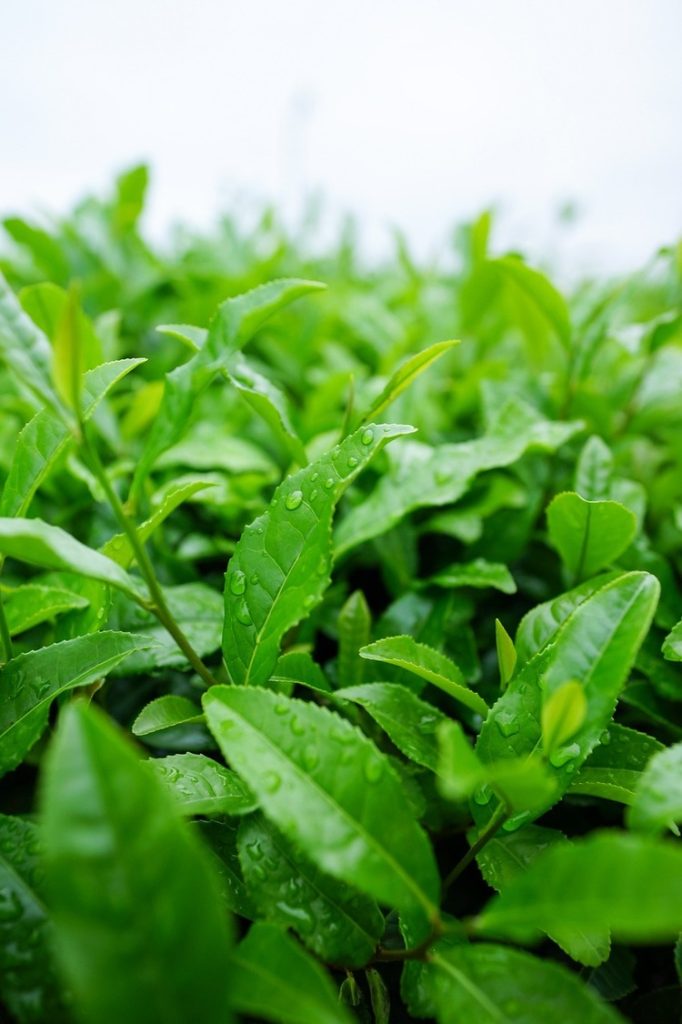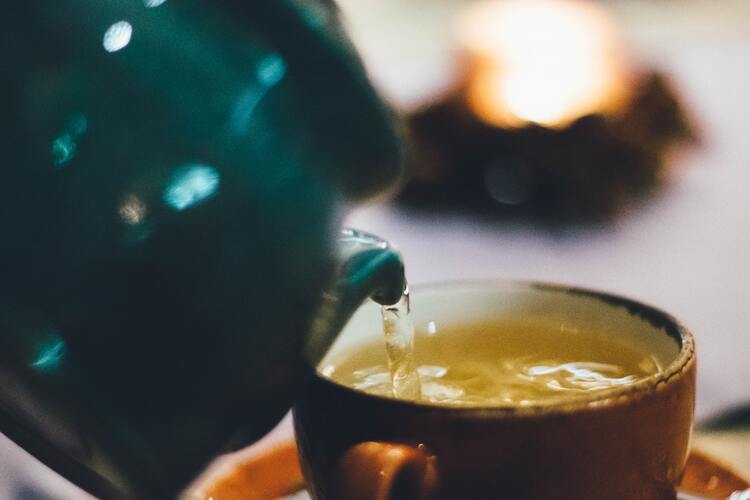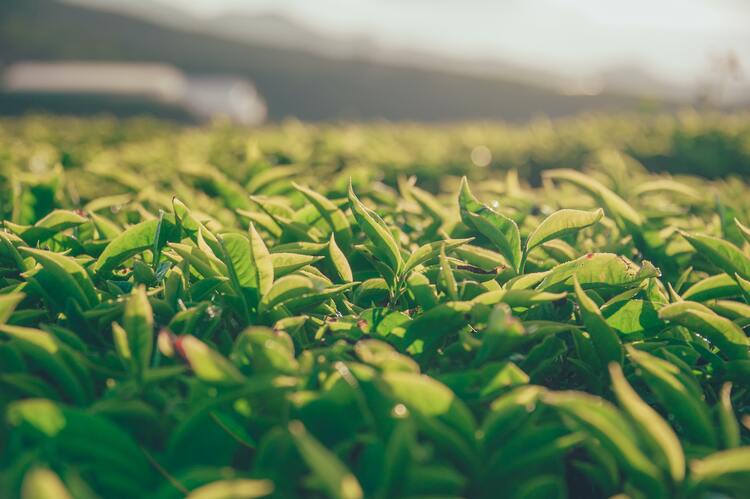Are you looking for a new type of tea to sample? If so, you may want to try Shincha tea. This type of tea is unique to Japan and is only available for a short time each year. It is made from the first leaves of the tea plant, which are picked in the early spring and quickly processed to preserve their fresh and delicate flavor.
In this article, we explore this highly regarded tea known for its light taste, a hint of sweetness, and subtle grassy flavor.
Please note: This article contains affiliate links, meaning I may earn a commission if you make a purchase by clicking a link. Of course, this comes at no extra cost to you and helps me keep offering readers solid information.

History of Shincha
Shincha, also known as “new tea,” is a Japanese green tea harvested in the spring. This tea is highly prized for its fresh, grassy flavor and delicate aroma.
Shincha has a long and rich history dates back to the 8th century. Tea was considered a luxury item only consumed by the upper classes during this time. It wasn’t until the 12th century that tea became more widely available to the general public. At this time, tea was primarily consumed in the form of matcha, a powdered green tea that was whisked with hot water.
It wasn’t until the 17th century that loose-leaf tea became popular in Japan. This was partly due to the influence of Chinese tea culture, which emphasized the importance of brewing loose-leaf tea in a teapot. As loose-leaf tea became more popular, different varieties of tea began to emerge, including Shincha.
Shincha is unique because it is made from the first flush of tea leaves harvested in the spring. These leaves are considered the most tender and flavorful, as they have been growing slowly throughout the winter months. Because Shincha is made from such high-quality leaves, it is only available for a short period each year, typically from late April to early June.
Today, Shincha is one of Japan’s most popular tea types. People of all ages enjoy it and is often served at special occasions, such as weddings and tea ceremonies.
Shincha Tea Harvesting
First Harvest
Shincha tea is harvested during the first flush of spring. This is known as the “first harvest” and is considered the most prized harvest of the year. The leaves picked during this time are young and tender, with a delicate flavor highly sought by tea enthusiasts.
Harvest Schedule
The harvest schedule for Shincha tea varies depending on the geographical location of the tea plantations. In Kyushu (the most southerly of Japan’s four main islands), the first harvest typically takes place in early April, while in Honshu (Japan’s largest island) it usually occurs in late April or early May. In Yakushima, the first harvest can occur as early as mid-March due to the warmer climate.
Geographical Location
The geographical location of the tea plantation can significantly impact the flavor and quality of the Shincha tea. For example, tea plants grown in the mountainous regions of Yakushima are exposed to a unique microclimate that results in a distinct flavor profile. Similarly, tea plants grown in Kyushu tend to have a more robust flavor due to the warmer climate and fertile soil.

Types of Shincha
When it comes to Shincha, there are four main types that you should be aware of: Hashiri Shincha, Hachiju Hachiya Shincha, Nibancha, and Sanbancha. Each of these types has its unique characteristics that make them stand out.
Hashiri Shincha
Hashiri Shincha is the first tea of the season, harvested in early April. This type of Shincha is known for its fresh and vibrant flavor, and it’s often described as being “grassy” or “vegetal.” Hashiri Shincha is also known for its bright green color and delicate aroma.
Hachiju Hachiya Shincha
Hachiju Hachiya Shincha is harvested later in the season, usually in late May or early June. This type of Shincha has a more mature flavor than Hashiri Shincha, often described as “nutty” or “earthy.” Hachiju Hachiya Shincha is also known for its deep green color and rich aroma.
Nibancha
Nibancha is a type of Shincha harvested in the middle of the season, usually in late April or early May. This type of Shincha has a slightly more mature flavor than Hashiri Shincha, but it’s not as mature as Hachiju Hachiya Shincha. Nibancha is often described as “refreshing” or “invigorating,” it’s known for its light green color and subtle aroma.
Sanbancha
Sanbancha is the last tea of the season, and it’s harvested in late June or early July. This type of Shincha has a very mature flavor and is often described as “earthy” or “woody.” Sanbancha is also known for its dark green color and its strong aroma.
Processing of Shincha
When it comes to processing Shincha tea, several steps are involved that help bring out its unique flavor and aroma. Let’s take a closer look at each of these steps.
Steaming
After the leaves are harvested, they are immediately steamed to prevent oxidation. This step is crucial in preserving the fresh, delicate flavor of Shincha tea. The steaming process also helps to soften the leaves, making them easier to roll.
Rolling
Next, the leaves are rolled to shape them into thin, needle-like shapes. This process also helps release the tea’s natural oils, contributing to its rich flavor and aroma.
Drying
Once the leaves are rolled, they are dried to remove any remaining moisture. This step helps to preserve the tea’s freshness and flavor, as well as prevent the growth of mold and bacteria.
Read More: The Process of Making Green Tea
Taste and Aroma of Shincha
Flavor Profile
Shincha tea has a flavor profile sets it apart from other green teas. It is fresh, vibrant, and has a slightly grassy taste and subtle sweetness. The aroma is also fresh and grassy, with a hint of seaweed.
Umami Flavor
Shincha tea is known for its umami flavor, a savory taste often described as brothy or meaty. This flavor comes from the amino acid L-theanine, which is found in high concentrations in the young leaves of the tea plant.
Sweetness
Shincha tea has a natural sweetness that is not overpowering. This sweetness comes from the natural sugars in the tea leaves. The sweetness is balanced by the other flavors in the tea, making it a well-rounded and enjoyable drink.
Astringency
Shincha tea has a mild astringency, a dry and puckering sensation in the mouth. This is due to the presence of tannins in the tea leaves. However, the astringency is not overpowering and is balanced by the other flavors in the tea.

Brewing Shincha
Shincha is a delicate tea that requires proper brewing to reach its full potential. Here are some tips on how to brew Shincha tea to perfection.
Water Temperature
The water temperature is crucial when brewing Shincha tea. The ideal temperature for Shincha is between 60°C to 70°C. Boiling water will scorch the tea leaves and ruin the flavor. If you don’t have a thermometer, let the water cool down for a few minutes after boiling.
Brewing Time
The brewing time for Shincha tea is only 30 to 60 seconds short. Oversteeping the tea will make it bitter and astringent. Use a timer or watch the clock to ensure you don’t overbrew the tea.
To brew Shincha tea, follow these steps:
- Preheat your teapot or teacup by pouring hot water into it and then discarding the water.
- Put 1 to 2 teaspoons of Shincha tea leaves into the teapot or teacup.
- Pour the hot water over the leaves and let it steep for 30 to 60 seconds.
- Strain the tea leaves and pour the tea into your teacup.
- Enjoy the delicate and flavorful taste of Shincha tea!
Remember, brewing Shincha tea requires attention to detail and precision. With the right water temperature and brewing time, you can enjoy this tea’s full flavor and aroma.
Comparison with Other Japanese Teas
Sencha
Sencha is the most popular tea in Japan and is made from the same tea leaves as Shincha. However, the main difference between the two is that Shincha is made from the year’s first harvest, while Sencha is made from the later harvests. Shincha has a fresher and more delicate flavor than Sencha, which can be slightly bitter.
Gyokuro
Gyokuro is a premium Japanese green tea shaded for a few weeks before harvesting. This process increases the umami flavor and reduces bitterness. Shincha and Gyokuro share a similar flavor profile, but Gyokuro has a richer and more complex taste.
Matcha
Matcha is a powdered green tea that is made from shade-grown tea leaves. It has a strong and distinct flavor and is often used in traditional Japanese tea ceremonies. Shincha and Matcha have different flavor profiles, with Shincha being lighter and more refreshing, while Matcha has a stronger and more concentrated taste.
Hojicha
Hojicha is a roasted green tea that has a nutty and smoky flavor. It is made from Sencha or Bancha tea leaves. Shincha Hojicha is a unique variety made from the year’s first harvest. It has a fresher and more delicate taste compared to regular Hojicha.
Genmaicha
Genmaicha is a blend of green tea and roasted brown rice. It has a nutty and slightly sweet flavor. Shincha Genmaicha is made from the year’s first harvest and has a fresher and more delicate taste than regular Genmaicha.
Kabusecha
Kabusecha is a green tea shaded for a few days before harvesting. This process increases the umami flavor and reduces bitterness. Shincha and Kabusecha have a similar flavor profile, but Kabusecha has a slightly richer taste.
Bancha
Bancha is a lower-grade green tea made from the later harvests of the year. It has a stronger and more bitter taste compared to Shincha.

Shincha Varieties and Brands
If you’re looking for the best Shincha tea, you’ll want to try different varieties and brands. Here are some of the most popular to consider:
Shizuoka Shincha
Shizuoka is the largest tea-producing region in Japan. Shizuoka Shincha is known for its rich, full-bodied flavor and sweet aroma. Some popular Shizuoka Shincha brands include:
- Marumo Mori
- Kakegawa Seicha
- Kawane Honcho
Kagoshima Shincha
Kagoshima is a southern region of Japan known for its volcanic soil and warm climate. Kagoshima Shincha is known for its light, refreshing taste, and delicate aroma. Some popular Kagoshima Shincha brands include:
- Chiran Tea
- Kirishima Tea
- Sogi Tea
Mie Shincha
Mie is a region located in the center of Japan. Mie Shincha is known for its bright, grassy flavor and light aroma. Some popular Mie Shincha brands include:
- Tsuji Tea
- Iga Tea
- Kumano Tea
Uji Shincha
Uji is a region located in the southern part of Kyoto, Japan. Uji Shincha is known for its rich, full-bodied flavor and sweet aroma. Some popular Uji Shincha brands include:
- Tsuen Tea
- Fukujuen Tea
- Ujido Tea
Sugimoto Tea Company Shincha
Sugimoto Tea Company is a well-known tea company in Japan that specializes in Shincha tea. Sugimoto Tea Company Shincha is known for its high quality and excellent flavor. Some popular Sugimoto Tea Company Shincha varieties include:
- Organic Shincha
- Premium Shincha
- Karigane Shincha
No matter which Shincha variety or brand you choose, you’ll surely enjoy this delicious Japanese tea’s unique flavor and aroma.
Buying Recommendations
If you are interested in trying Shincha for yourself, there are a few things to keep in mind.
First, be sure to purchase your Shincha from a reputable source, as many counterfeit versions of this tea are on the market. Second, be prepared to pay a premium price for this tea, as it is considered one of the finest teas in Japan.
Here are some recommendations to get you started.
[Sugimoto Tea] Hachiju Hachiya Shincha Limited Edition

[SHINCHA] First Flush Green Tea

Buy on Amazon now!
[Shincha] Premium Sencha Green Tea

Frequently Asked Questions
What is Shincha tea?
Shincha tea, also known as “new tea,” is a type of Japanese green tea harvested in spring. It is made from the first flush of tea leaves, which are picked and processed within a few hours of harvesting.
What is the difference between Shincha and Sencha?
Sencha tea is a Japanese green tea harvested later in the season, typically in May or June. Shincha tea is harvested earlier, in April or May. Shincha tea is known for its fresher, more delicate flavor and aroma compared to Sencha tea.
What flavor is Shincha tea?
Shincha tea has a fresh, grassy flavor with a slightly sweet and nutty taste. It has a light and refreshing aroma characteristic of Japanese green tea.
What are the health benefits of drinking Shincha tea?
Shincha tea is also high in antioxidants, which can help reduce inflammation and protect against chronic diseases. It also contains L-theanine, an amino acid that can help promote relaxation and reduce stress.
How is Shincha tea different from Matcha and Sencha?
Matcha tea is a type of Japanese green tea that is made from ground tea leaves. It has a strong, earthy flavor. It is known for its high caffeine content. Sencha tea is a more common type of Japanese green tea harvested later in the season. Shincha tea is harvested earlier and has a fresher, more delicate flavor than sencha tea.

I hope you have enjoyed this article. I am a big fan of Japanese teas, and Shincha is no exception.
Have you tried this tea?
More About Green Tea
What Does Green Tea Taste Like?
What Does Sencha Tea Taste Like?